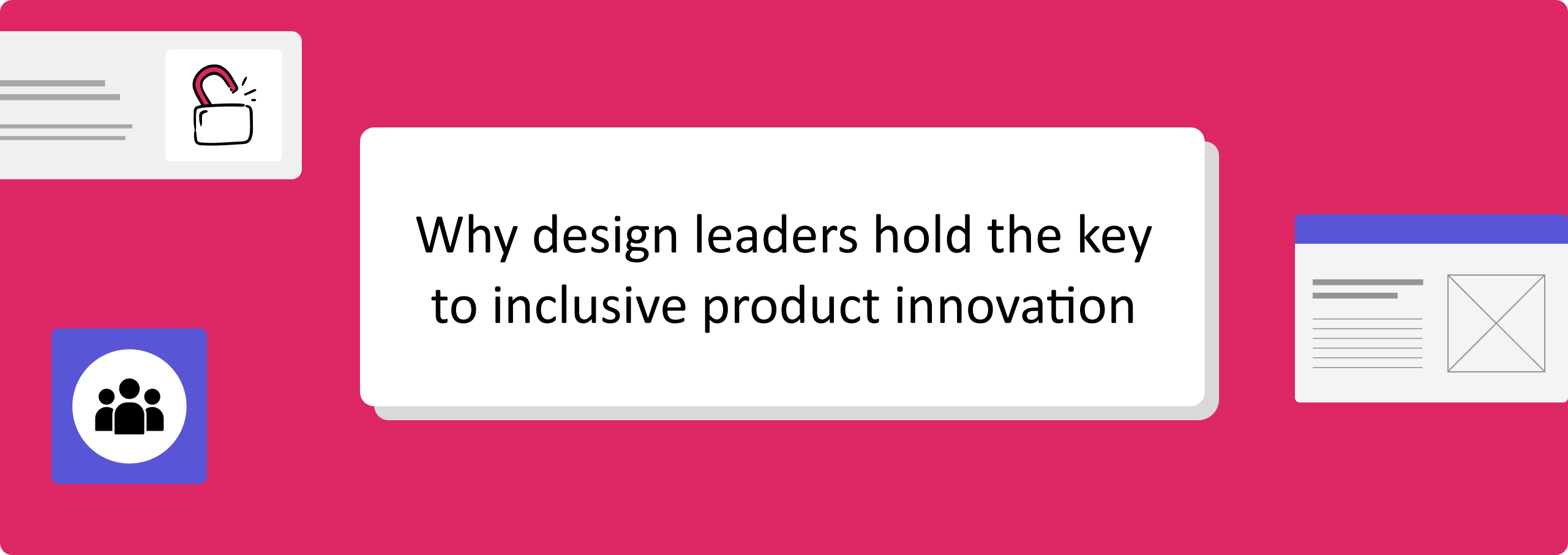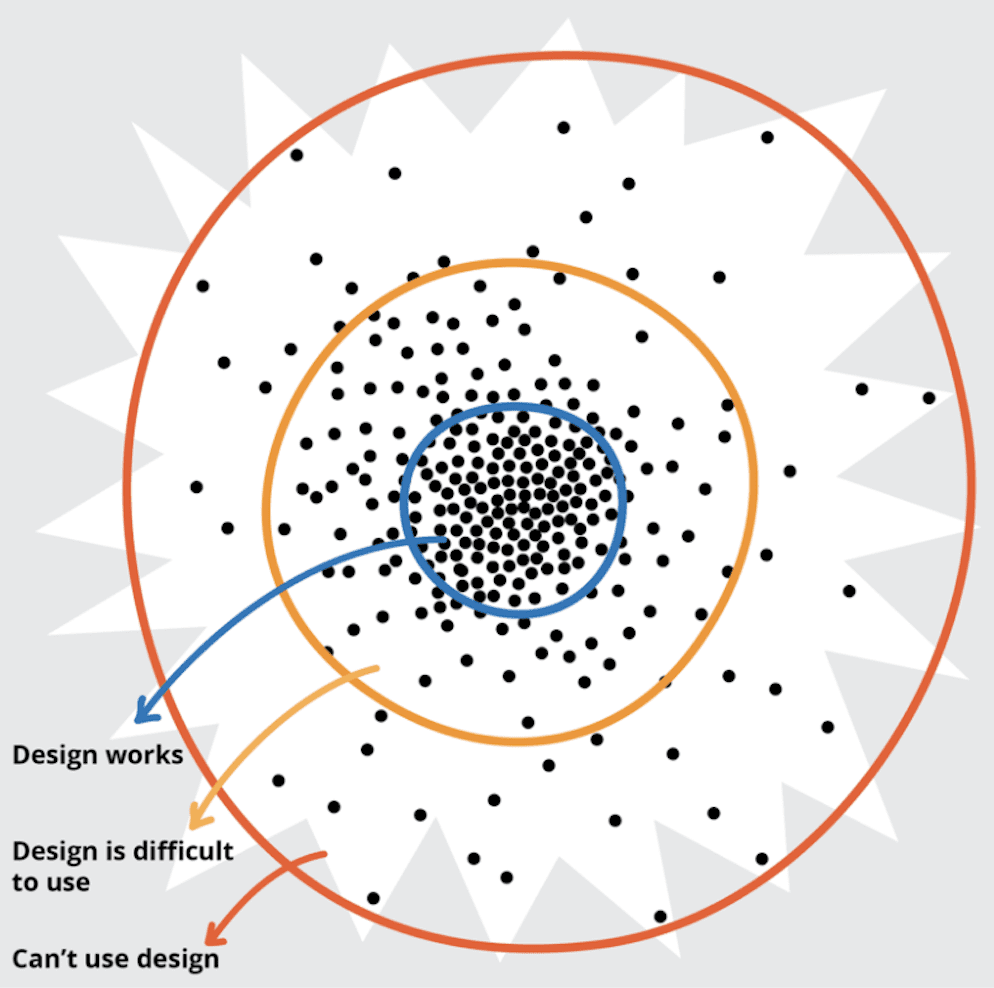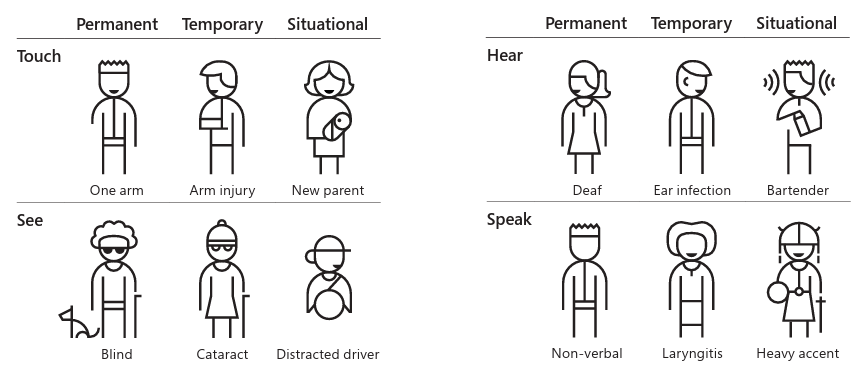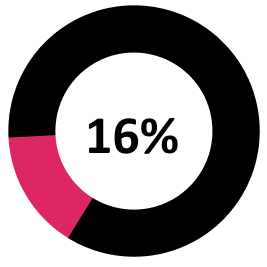
Why design leaders hold the key to inclusive product innovation
Have you ever tried speaking to a digital assistant, like Siri or Alexa, only to have it struggle to understand your accent? Or perhaps your phone’s auto-correct insists on changing text messages on your behalf because it doesn’t recognize “uncommon” names or informal phrases.
In both examples, the user knows what it feels like to be excluded by technology. It happens when we design for the “average” user—a flawed approach that overlooks the diversity of real people. Let’s dive deeper into why this happens and how we can do better.
An “average” mindset holds back progress
Digital experiences have long been designed for a mythical “average” user, failing to account for the diverse needs of real people. Designing products and systems in this way overlooks less-common experiences. Not only is this exclusionary, but it can actually create systemic harm.
In his book The End of Average, Todd Rose highlights one major failure of the “average” approach. In the 1950s, the U.S. Air Force was experiencing frequent plane crashes. Initially, pilots were blamed, but deeper investigation revealed a design flaw—the cockpit was built based on the “average” pilot’s body dimensions. The solution was to design adjustable cockpit seats, which later became the standard for workplace ergonomics, car seats, and more.
Cathy O’Neil is an author focused on the harms that algorithms and data-driven systems can do when they are designed based on flawed assumptions about “average” behavior. In her book Weapons of Math Destruction, O’Neil gives an example of a resume-screening algorithm that assumes the data on current employees represents ideal employees. If a company employs a majority of white males who graduated from Ivy League schools and play golf, the resume-screening tool would score candidates with those attributes higher than other candidates.
Unfortunately, designing for the “average” persists in today’s digital experiences. This negatively impacts people with disabilities.


A business advantage, not a compliance checkbox
Accessibility is still often treated as a compliance check rather than a core design principle. That’s unfortunate, because inclusive design can actually be a competitive advantage. There are plenty of examples where designing for the margins led to the development of remarkable products that are good for everyone.

Text-to-speech technology was originally designed for people with visual impairments. Today, it powers audiobooks, virtual assistants, and hands-free computing.

Netflix subtitles were originally created for Deaf and hard-of-hearing viewers. Now 80% of global Netflix users turn on captions monthly.

Nike’s Go FlyEase Step-In-And-Go shoes were designed for people with limited mobility seeking ease of entry. The design ended up appealing to other people who need a fast way to get shoes on and off—like parents and athletes.
Nike also happens to be the highest-earning brand in the sports industry.
A business advantage, not a compliance checkbox
Accessibility is still often treated as a compliance check rather than a core design principle. That’s unfortunate, because inclusive design can actually be a competitive advantage. There are plenty of examples where designing for the margins led to the development of remarkable products that are good for everyone.

Text-to-speech technology was originally designed for people with visual impairments. Today, it powers audiobooks, virtual assistants, and hands-free computing.

Netflix subtitles were originally created for Deaf and hard-of-hearing viewers. Now 80% of global Netflix users turn on captions monthly.

Nike’s Go FlyEase Step-In-And-Go shoes were designed for people with limited mobility seeking ease of entry. The design ended up appealing to other people who need a fast way to get shoes on and off—like parents and athletes.
Nike also happens to be the highest-earning brand in the sports industry.
The high cost of ignoring accessibility
In order to tap into the business benefits of inclusive design we need a shift in thinking. People with disabilities represent the largest untapped market segment in the world with incredible spending power that surpasses the GDP of entire nations. 1.3 billion people worldwide have disabilities, representing a $13 trillion market when combined with their friends and family.
Disabilities aren’t always permanent. They can be temporary, like someone who has to navigate digital experiences with a broken arm for a few weeks. They can also be situational, like struggling to hear the conversation in a crowded bar or another environment with excessive background noise.
So, while a portion of our population experiences permanent disability, all of us rely on and benefit from accessibility accommodations.

Microsoft’s Accessibility Persona Spectrum (Microsoft Inclusive Design)
Finally, it’s important to remember that people aren’t always born with disabilities. Many are acquired through injury, disease, or simply aging. And our global population is aging, with United Nations (UN) data projecting the population of people aged 65 and older will grow to 1.7 billion by 2054.
Unlike the Boomers of today, this group will consist of digital natives who have high standards for their product experiences and no qualms about taking their spending power elsewhere if any experience falls short.
In fact, this dynamic is already playing out:
The high cost of ignoring accessibility
In order to tap into the business benefits of inclusive design we need a shift in thinking. People with disabilities represent the largest untapped market segment in the world with incredible spending power that surpasses the GDP of entire nations. 1.3 billion people worldwide have disabilities, representing a $13 trillion market when combined with their friends and family.
Disabilities aren’t always permanent. They can be temporary, like someone who has to navigate digital experiences with a broken arm for a few weeks. They can also be situational, like struggling to hear the conversation in a crowded bar or another environment with excessive background noise.
So, while a portion of our population experiences permanent disability, all of us rely on and benefit from accessibility accommodations.

Microsoft’s Accessibility Persona Spectrum (Microsoft Inclusive Design)
Finally, it’s important to remember that people aren’t always born with disabilities. Many are acquired through injury, disease, or simply aging. And our global population is aging, with United Nations (UN) data projecting the population of people aged 65 and older will grow to 1.7 billion by 2054.
Unlike the Boomers of today, this group will consist of digital natives who have high standards for their product experiences and no qualms about taking their spending power elsewhere if any experience falls short.
In fact, this dynamic is already playing out:
Design leaders have a critical role to play
Businesses that get ahead of simply checking regulatory boxes to practice truly inclusive design are poised to win. And design leaders are the natural choice to lead the movement. Here’s why:
McKinsey and Company reports that “companies excelling at design grow revenues and shareholder returns at nearly twice the rate of their industry peers.” Design leaders with decision-making authority have the potential to impact customer experience, product innovation, and profitability.
Further, the McKinsey Design Index highlights four areas of action companies need to join the top quartile of design performers. The third is “nurture your top design people and empower them in cross-functional teams that take collective accountability for improving the user experience while retaining the functional connections of their members.”
The Adobe State of Create reports that 78% of businesses investing in creative experience provide better customer experience.
Designers are strategic accessibility leaders
Design is not just a support function—it’s a strategic driver of impactful experiences. UX designers are relentless in their pursuit of seamless, intuitive, and meaningful interactions for all users. It’s time to move beyond designing for the “average” and harness the power of the margins to create more inclusive, innovative, and memorable experiences for everyone.




